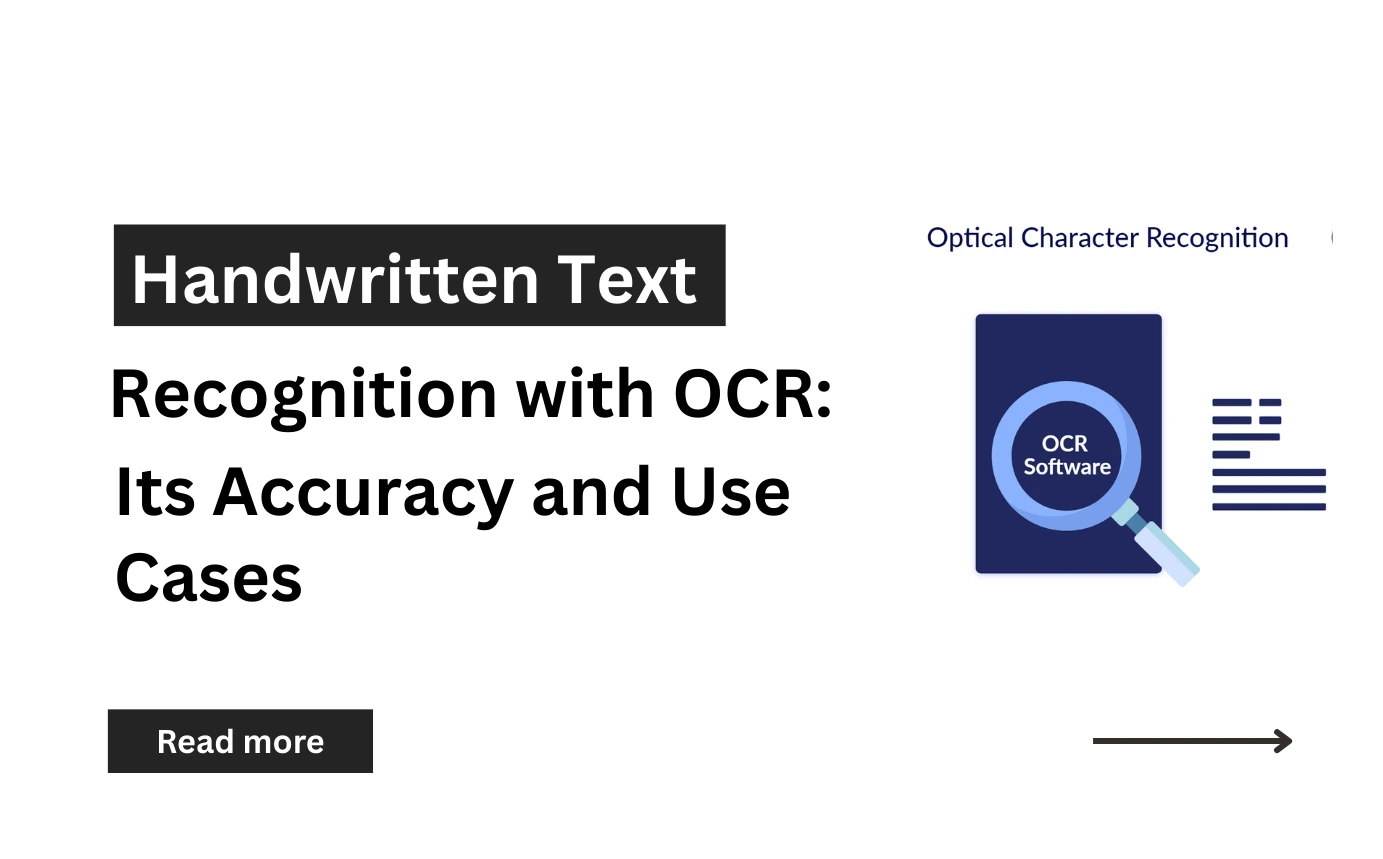

In the age of digital first, the power to transcribe handwriting has become as critical as ever. From digitized notes and legal documents to prescriptions and ancient manuscripts, handwritten material continues to dominate many industries. But it takes time to manage and extract data from such unstructured data without automation.
Here comes Handwritten Text Recognition (HTR) based on OCR. While regular OCR performs best with printed fonts, handwriting OCR has been developed to capture the intricacies of handwriting, slanted letters, and distinctive handwriting styles. With the evolution of machine learning, feature extraction, and image processing, softwares like Tesseract OCR and newer AI models are enabling near-human accuracy levels.
In this blog, we will break down the Who, What, Why, When, Where, and How of handwritten text recognition with OCR. We’ll explore how handwriting OCR works, the role of AI and deep learning, key challenges, accuracy factors, and the best use cases across industries. By the end, you’ll understand why OCR handwriting to text is no longer a futuristic dream but a reliable solution used in everyday workflows.
Handwritten Text Recognition (HTR) is a subset of OCR (Optical Character Recognition) that is used for the recognition of handwritten notes to machine-readable text. Although conventional OCR was designed for structured, typed fonts, HTR uses AI-driven feature extraction and image processing to interpret the irregularities of freehand notes and cursive writing.
Modern handwriting OCR tools can handle scanned pages, digital ink (from stylus input), and even poor-quality images, turning them into editable documents such as Word, Excel, or searchable PDFs.
Students & Researchers: Converting handwritten research drafts or lecture notes into editable digital text.
Healthcare Professionals: Reading and digitizing doctors' handwritten prescriptions for patient safety and accuracy.
Banking & Finance :Scanning data from application forms, cheques, and handwritten ledgers.
Legal & Government :Scanning handwritten affidavits, contracts, and documents of historical importance.
Businesses & Enterprises:Automating handwritten form filling for productivity.
Without OCR on handwritten text, organizations face:
Prone to mistakes when retyping handwritten content.
Converting handwriting manually takes hours.
Handwritten notes are hard to search and share.
By using handwriting OCR, businesses achieve:
AI-driven recognition ensures quick and precise conversion.
Reduced manpower for manual transcription
Ability to process large volumes of handwritten forms efficiently.
OCR handwriting to text performs optimally when:
Modern engines like Tesseract OCR combined with deep learning frameworks are able to convert handwriting to text OCR online with higher accuracy than earlier versions.
Handwriting OCR has been a game-breaker in industries where handwritten information is prevalent.
Education :It is used by schools and universities to digitalize handwritten notes, assignments, and exams. Not only does it save space but makes learning material easily searchable and available.
Healthcare : Digitizing handwritten prescriptions from handwriting ensures accuracy, minimizes misinterpretation, and assists hospitals with keeping patient records well-organized.
Finance :Banks clear handwritten cheques and forms quicker using OCR, reducing manual errors and accelerating loan applications and account opening.
Government Archives :Handwritten historical records and legal documents are scanned, stored, and made searchable for quick access and transparency.
Enterprise Use : Companies use OCR handwriting-to-text web-based solutions for customer onboarding forms, surveys, and registrations, allowing quicker KYC and streamlined workflows.
The process involves:
Prepares scanned handwriting by adjusting brightness, contrast, and removing noise.
Identifies strokes, curves, and patterns in handwritten characters.
Recognize and classify letters using deep learning neural networks.
Handles continuous and overlapping strokes typical in handwritten notes.
Outputs editable text that can be used in applications, databases, or analytics.
Popular tools like Tesseract OCR are often trained with specialized datasets to improve handwriting text recognition accuracy for diverse use cases.
From recognizing its significance in addressing document processing issues to practical applications in healthcare, education, and finance, it is obvious that OCR handwriting to text is transforming the way we handle handwritten data. Based on AI-powered developments in machine learning, image processing, and feature extraction, the technology continues to provide quicker, more precise, and scalable solutions. This development makes handwriting OCR amongst the most influential interfaces for closing the gaps between paper records and computer-based data systems.
For companies and organizations that seek to leverage these advantages, PixDynamics' Handwritten OCR is a trusted choice. Crafted to process everything from intricate cursive handwriting to large volumes of handwritten forms, it delivers accuracy, speed, and seamless integration with contemporary workflows empowering organizations to turn manual tasks into intelligent digital experiences.
Ready to transform? Commence your Digital Transformation journey now!
Get Started